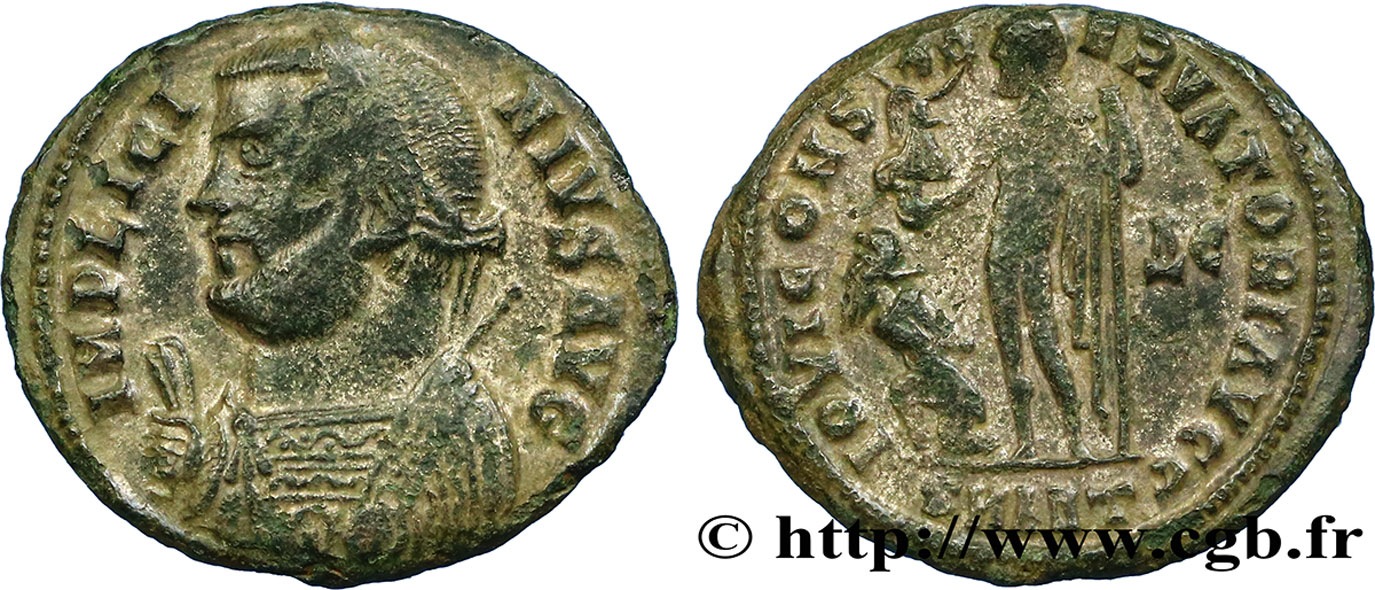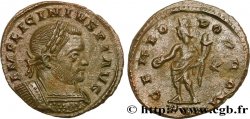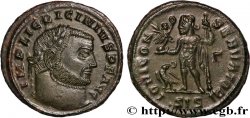E-auction 146-84739 - brm_243013 - LICINIUS I Follis ou nummus
You must signin and be an approved bidder to bid, LOGIN TO BID. Accounts are subject to approval and the approval process takes place within 48 hours. Do not wait until the day a sale closes to register. Clicking on « bid » constitutes acceptance of the terms of use of cgb.fr private e-auctions.
Bids must be placed in whole Euro amounts only. The sale will start closing at the time stated on the item description; any bids received at the site after the closing time will not be executed. Transmission times may vary and bids could be rejected if you wait until the last second. For further information ckeck the E-auctions F.A.Q.
NO BUYER'S FEE.
NO BUYER'S FEE.
| Estimate : | 75 € |
| Price : | 20 € |
| Maximum bid : | 20 € |
| End of the sale : | 01 February 2016 14:23:00 |
| bidders : | 6 bidders |
Type : Follis ou nummus
Date: 317-320
Mint name / Town : Antioche
Metal : copper
Diameter : 18 mm
Orientation dies : 12 h.
Weight : 3,10 g.
Rarity : R2
Officine: 9e
Coments on the condition:
Exemplaire sur un petit flan ovale bien centré des deux côtés avec les grènetis visibles. Beau buste consulaire avec une usure superficielle. Revers de style fin. Belle patine gris foncé avec des reflets dorés. Conserve une partie de son brillant de frappe
Catalogue references :
Obverse
Obverse legend : IMP LICI-NIVS AVG.
Obverse description : Buste lauré consulaire de Licinius Ier à gauche, vu de trois quarts à gauche, tenant un sceptre et un globe de la main gauche et la mappa de la main droite (H*23).
Obverse translation : “Imperator Licinius Augustus”, (L’empereur Licinius auguste).
Reverse
Reverse legend : IOVI CONS-ERVATORI AVGG/ -|(DELTA)E// SMANT.
Reverse description : Jupiter nicéphore nu, debout à gauche, le manteau sur l'épaule, tenant un globe nicéphore de la main droite et un sceptre long de la gauche ; dans le champ à gauche, un captif agenouillé à gauche.
Reverse translation : “Iovi Conservatori Augustorum”, (À Jupiter protecteur des augustes).
Commentary
Avec l’intégralité de son argneture superficielle. Rubans de type 3 aux extrémités bouletées. Marque particulière pour la neuvième officine formée d’un delta et un epsilon pour éviter d’utiliser le thêta initiale de thannatos (la mort).








 Report a mistake
Report a mistake Print the page
Print the page Share my selection
Share my selection Ask a question
Ask a question Consign / sell
Consign / sell
 Full data
Full data










